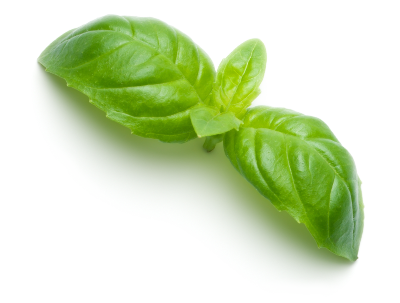The many roles of vitamin C

The many roles of vitamin C

The month of May seemed to fly by at Kathryn Matheson Nutrition. In addition to working with clients, participating in public education events, and teaching Qigong twice a week, I also had the privilege of continuing to undertake research in support of the work of the International Society for Orthomolecular Medicine (ISOM) in Canada.
Most of this month was spent digging more deeply into the key characteristics or hallmarks of cancer at a cellular level. This in turn enabled an in-depth examination of the role of nutrition in cancer prevention, as part of an integrative approach to treatment, and in the minimization of recurrence. This is not to suggest that nutritional interventions hold all of the answers, but rather that as cancer is increasingly recognized as a metabolic disease, there is a place for individualized nutrition in comprehensive strategies aimed at prevention and support during and after treatment.
One of the nutrients that became a key focus in this research was vitamin C. There is a growing body of research indicating that when high-dose vitamin C is administered intravenously, it can help to support immunity, reduce pain, and improve quality of life. Certain studies have also pointed to enhanced survivability when vitamin C is included as part of a broader treatment approach. The work of practitioners undertaking integrative cancer care is also demonstrating these benefits at a clinical level.
As a nutritionist, it would be beyond the scope of my practice to administer IV vitamin C, but it is important for me to be aware of the research, and of what complementary supports are available, so that I may refer clients appropriately. I firmly believe that a greater level of support becomes possible when practitioners work collaboratively in the best interests of their clients and patients.
Higher doses of vitamin C are also being shown to play a role in helping to reduce symptoms associated with opioid withdrawal. Given the challenges that many people are currently facing in this regard, incorporating nutritional approaches to help address substance use disorders should also be top of mind. ISOM’s webpage on addiction provides a helpful resource.
I believe it is also important to understand the various functions of nutrients like vitamin C in our bodies. Quite often we have a vague idea from things we read or hear in the media, but this does not always translate to a deeper understanding of what these nutrients do, why some of us may be more predisposed to insufficiencies or deficiencies than others, and what symptoms might be signalling to us that we might need to up our intake of supportive whole foods.
For instance, vitamin C plays many roles in immunity, including regulating inflammation and reducing oxidative stress, but did you know that it also works in the body to:
• support collagen formation and maintenance
• help regulate cortisol
• aid in thyroid hormone production
• support cholesterol metabolism
• help synthesize carnitine, a compound made in the body that helps turn fat into energy
• increase absorption of iron
• aid in regulation of gene expression
• decrease side effects associated with heavy metal toxicity
• support the production of serotonin and regulation of dopamine, both of which play an important role in mental health
Vitamin C is also found in every structure of the eye! It is obviously an essential nutrient to many bodily processes that support both physical and mental health. Interestingly, most animals and plants can make their own vitamin C, but humans have evolved away from this ability, making it all the more important to obtain adequate amounts from food and supplementation, when warranted.
Some of the top food sources of vitamin C include:
• citrus fruits
• kiwi fruit
• strawberries
• cantaloupe
• red pepper
• Brussel sprouts
• broccoli
• tomato
The benefit of obtaining vitamin C from whole foods is that they also contain other supporting nutrients which work together in support of body processes. Remember, though, that the vitamin C content of foods is highest in fresh, uncooked food, so it is helpful to eat at least some sources in their raw form.
Certain things also lead to increased requirements for vitamin C. It is important to be aware of these, so that we can increase our intake accordingly:
• all kinds of stress
• smoking and passive smoking (second hand smoke)
• alcoholism
• limited variety of food
• malabsorption (difficulty digesting or absorbing nutrients from food)
• certain chronic inflammatory diseases
A variant in the SLC23A1 (rs33972313) gene can also lead to increased requirements for vitamin C. This gene is a transporter gene that aids in the absorption of vitamin C from food, through the colon, and into the blood. A variant in this gene can affect the body’s ability to properly obtain and use vitamin C.
So what are some symptoms of vitamin C deficiency?
• bleeding gums
• slow wound healing
• bruise easily
• decreased infection resistance
• broken capillaries
• restlessness or irritability
• thinning or premature aging of the skin
It is important to bear in mind, though, that these symptoms can also be related to other causes. If a few of them are occurring at the same time, this may more strongly indicate a need for increased intake of vitamin C.
Safety is also of paramount importance. The Council for Responsible Nutrition makes available online a publication on vitamin and mineral safety. The excerpt pertaining to vitamin C states the following:
“Vitamin C has an extremely low potential for toxicity. Multigram supplements have been widely used for decades, with only mild and transient gastrointestinal effects such as irritation, bloating, and diarrhea. The adverse gastrointestinal effects of very high intakes justify the establishment of a UL at 2,000 mg per day.”
It goes on to state that, “several more serious adverse effects have been purported in books and review articles. These effects have not been supported by the evidence in regard to oral consumption”.
Indeed, in the case of certain acute or chronic health conditions, doses above 2,000 mg may be recommended over the short-term. It is important to remember, though, that higher doses of vitamin C are best taken in smaller amounts more frequently throughout the day to support optimal utilization by the body. Furthermore, as I was reminded throughout my studies, “you can’t out-supplement a poor diet”. Food is always the first place to start.
I hope this information has helped you to learn a bit more about vitamin C, how it works in the body, key food sources, and situations when our requirements for this nutrient might be higher. As I often note, nutrition is not a one-size-fits-all approach. My hope is that you will take this information and apply it to your own situation in order to determine whether you might benefit from some additional sources of vitamin C. Remember, I am always here to assist!
Resources:
The Complete Eye Health and Nutrition Guide: Eye Foods, Laurie Capogna, OD, 2019
International Society for Orthomolecular Medicine (ISOM) Mental Health Resources: https://isom.ca/mental-health/
Micronutrient Information Centre: https://lpi.oregonstate.edu/mic/vitamins/vitamin-C
National Institute of Health:
https://ods.od.nih.gov/factsheets/VitaminC-Consumer/
https://ods.od.nih.gov/factsheets/VitaminC-HealthProfessional/
The Nutrition Source: https://www.hsph.harvard.edu/nutritionsource/vitamin-c/
Nutritional Medicine, Second Edition. Alan R. Gaby, M.D., 2017
Staying Healthy with Nutrition, Elson M. Haas, M.D., 2006
Vitamin and Mineral Safety 3rd Edition (2013) Council for Responsible Nutrition (CRN) www.crnusa.org

